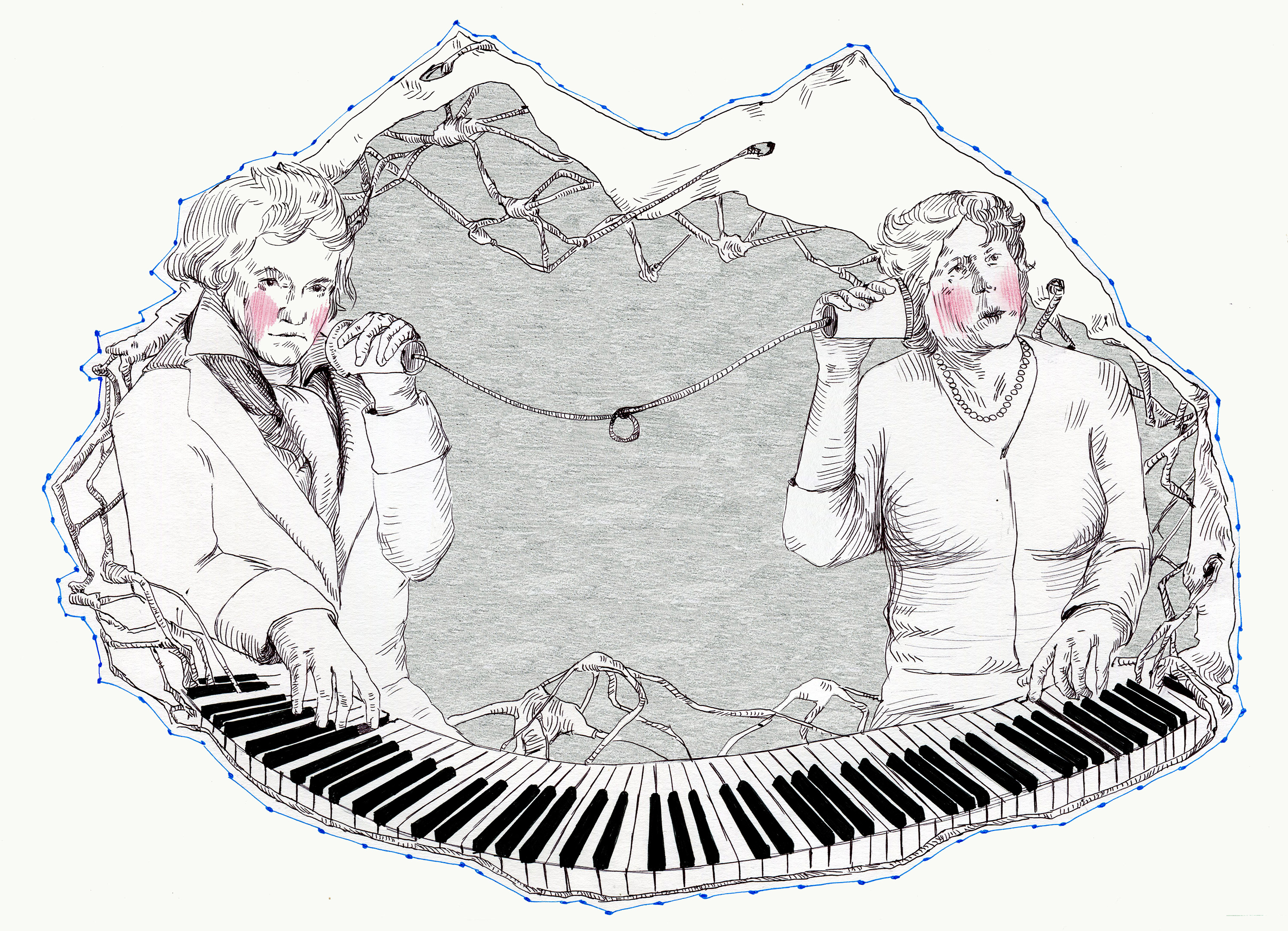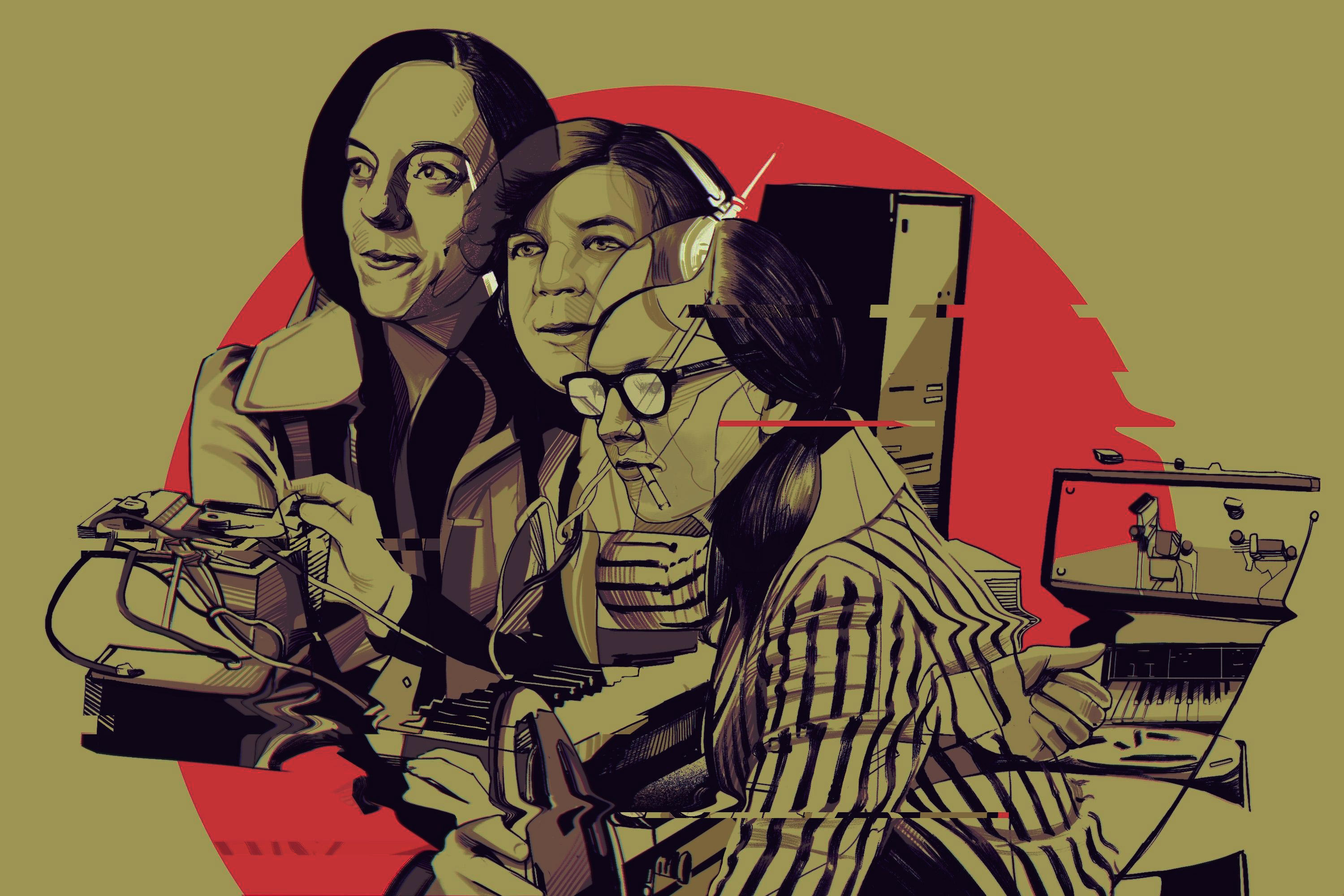Mary Hallock Greenewalt’s Illuminated Music
Conceptually ambitious and technically innovative, an advanced system for syncing light and music was overshadowed by a patent struggle in the early 20th century
Mary Hallock Greenewalt was a pioneer, artistically and technically. But in choosing to defend her invention in an arena devoted to industrial progress, she exposed the fault lines between the realm of art and the realm of business.
Maybe the problem was that Greenewalt didn’t seem like someone on the cutting edge of technology. She was a woman, first of all, and in the 1920s, invention and engineering were very much the province of men. There was also a distinct turn-of-the-century aura about her: She spoke and wrote in flowery Victorian cadences, and her musical sense would forever orbit the sun of 19th-century Romanticism.
But Greenewalt’s “light-music,” the basis of her ongoing lawsuit against Stanley Corporation of America, was indeed advanced, taking the form of clouds of illuminated color throughout a given performance space shifting in counterpoint to the music. She had realized the long-standing dream of an abstract art form of pure light and color in modern, electrical terms. The artistic concept was ambitious, but her technical acumen was considerable.
It was all overshadowed, however, by a lawsuit that, by 1929, had been working its way through the legal system for a year and a half. Greenewalt was claiming that theater owners who accompanied their musical entertainments with carefully coordinated displays of colored light were simply repackaging her patented aesthetic innovations without credit.
In her final arguments, she recounted the day – September 18th, 1916 – when she had first demonstrated her light-music to the Illuminating Engineers’ Society, in the Rose Room of Philadelphia’s Bellevue-Stratford hotel. Having done all that, Greenewalt did what she had always done, with her lights or otherwise: She appealed to the emotions.
Your Honor, the artists of the world have suffered much, as have the inventors. They have been travestied, they have been misunderstood. They have been defrauded.
We mothers, your Honor, know when the children are ours. We know through the travail and the labor.
Your Honor, ever since Solomon’s time the judges of the world have been called upon to decide on the true motherhood.
Your Honor, your Honor, I want the guardianship of my child art.
Greenewalt’s notes for her testimony (dated December 23rd, 1929, and preserved, with the rest of her papers, by the Historical Society of Pennsylvania) are strangely congruent with the rest of her art, a splash of heat and sentiment disrupting a bastion of cool objectivity – in this instance, a patent court. Greenewalt v. Stanley Co. of Am. was, for the plaintiff, not so much about money as recognition. Greenewalt thought she had invented an art form. The law, with its eye on the bottom line, decided that art was not something that could be invented.
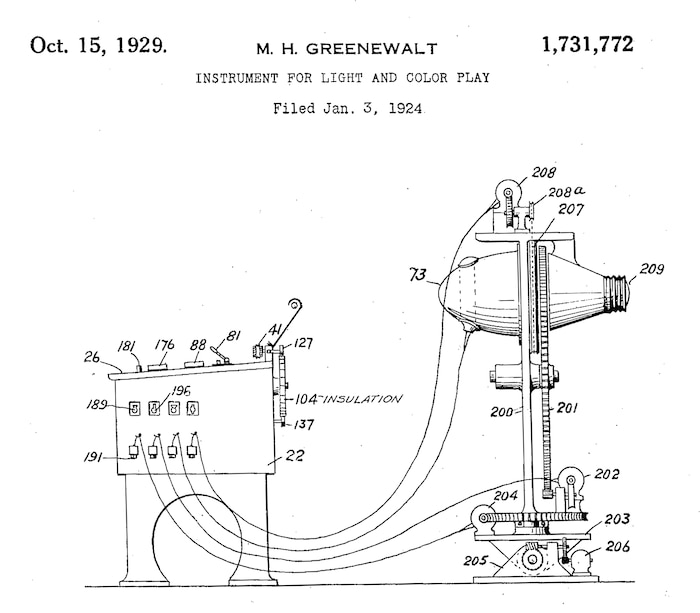
For a patent lawsuit, Greenewalt v. Stanley Co. of Am. breathed rarified air. The patent in question – no. 1,481,132 (reissued 16,825), “Method and Means for Associating Light and Music,” originally filed by Greenewalt in August of 1918 – had couched its aims in somewhat dry terms:
The object of my invention is to associate with musical or articulate sounds in various tones or shades a certain arbitrary system of brightening or darkening effects, with or without color accompaniment, peculiarly adapted to express or to complement the emotions produced by musical notes and tones in order that the pleasure derived by the individual through the sense of hearing may be enhanced through the sense of sight.
But Greenewalt’s court testimony regarding her innovations was more boldly evocative, reading less like evidence and more like a manifesto:
Behold sun light in its natural state.
What has the invention added to it?
It has added to light factors that are found only under the covering of man’s skin, factors not in any sense a part of light’s natural behavior.
It has made light poetry out of what was before light inarticulate.
It has made light music out of what was before but like the whistling of the wind.
Greenewalt called her light-music conception “Nourathar,” a made-up word derived from the Arabic for “essence of light.” In her rambling textbook/memoir Nourathar: The Fine Art of Light Color Playing, published in 1946, Greenewalt regarded her neologism as another reflection of precedence. “The necessity for coining a new word is one proof of invention, of true origination,” she wrote. “It is a testimony to the first appearance.”
In practical terms, Nourathar was mood lighting, a method for bathing auditoriums in saturated light, the colors shifting with the emotion of the music. “It is light and its color caused to create a new means of fine art expression,” Greenewalt explained. “The gamut of emotional values may through these be largely suggested. And in such a way that others may feel and understand the player’s intentions through his play.”
That description is comparatively prosaic. In other passages, Greenewalt exalted light into an empyrean spirituality. “With subtlety it infiltrates deep to within the still farther tissues of the human form divine. Cosmic forces created this substance. In the hands of man it may now turn around and make more plain a different cosmic way. Till, granted the artist at work, this base of experience, gotten through light, may be lifted up into a guise for a god to see.”
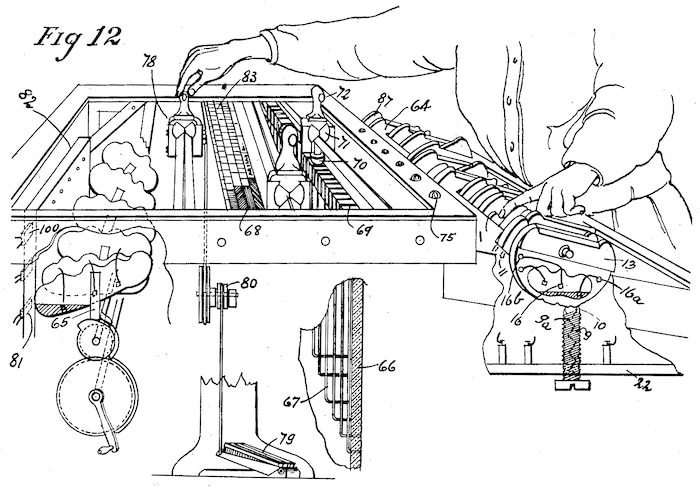
Greenewalt was born in Beirut in 1871, where her father, Samuel Hallock, was the American consul for Syria and Palestine. Samuel Hallock was also an inventor with a spiritual purpose. He had devised a method for quickly manufacturing new printing fonts, an invention that came in handy in Hallock’s other endeavor: printing and distributing Arabic-language Bibles for the American Bible Society. Hallock married Sara Tabet, the 15-year-old daughter of a notable local family; they had five children together. After battling mental illness for many years, Sara Tabet Hallock died, at the age of 28, in 1883. Mary, the eldest child, was 12.
Samuel Hallock sent his children back to the United States to live with relatives, with Mary and a sister ending up in Philadelphia. All the Hallock children had been given piano lessons by their mother – a standard element of a comfortable Gilded Age upbringing – but for Mary it was something more: She went on to attend the Philadelphia Musical Academy and spent a year in Vienna studying piano with the virtuoso and pedagogue Theodor Leschetizky. She married Frank Greenewalt, a successful medical doctor, and performed with orchestras in Philadelphia and Pittsburgh, in addition to giving solo recitals and lecturing on music to associations and clubs of wealthy music lovers.
Frank Greenewalt was friends with the artist Thomas Eakins, the leading painter of Philadelphia’s well-bred and well-off, and Eakins painted Mary Hallock Greenewalt’s portrait in 1903. In the painting, she wears a glamorous, elegant gown, but her sinewy hands lie limp in her lap. Her head is bowed and twisted at a slightly awkward angle, seemingly stiff from the effort of lowering her gaze to worldly things.
Still, it was such worldly matters that pushed Greenewalt into light-music. Greenewalt claimed that Nourathar was, in a way, sparked by the pressures of the market. The glut of European-trained pianists in America meant that, as she once explained, “talent, even genius, was no longer the basis of success for a pianist, unless there was something sensational and startling about the personality of the performer herself”:
Should I take on freakish personal attributes in order to draw to myself the attention of the managers and the public? No, I decided, I could never do that. The idea came to me that I must find something new – even something startling – not for myself, but for my art. Then came the flash – sunlight makes the world sing; why shouldn’t light help the song sing?
The idea wasn’t exactly new. As early as the 1720s, the French Jesuit and mathematician Louis-Bertrand Castel had experimented with a “clavecin pour les yeux” – a harpsichord for the eyes – the keys of which opened up shutters that let light shine through colored panes of glass. But Greenewalt seized on the idea, assuming a precedence that freed her to push her conception from mere mechanical considerations into more idiosyncratic and mystical territory.
That pattern – from quasi-scientific specifics to esoteric flight – was a crucial one to Greenewalt’s creative personality. Before light-music, Greenewalt had expended much of her efforts on a theory of pulse and rhythm. She started by surveying and averaging classical composers’ published metronome markings; she ended up at an existential consideration of temporality and mortality. In one lecture, “Time Eternal,” Greenewalt mused on the disconnect between the seeming objectivity of clock-time and the comparative freedom of imaginations and souls. “Why need our spirits go anywhere if they need no room? As to our bodies, do they not come right back again to what they were before, dust to dust?” she wondered. “Caesar turned into nourishment for a flower.”
Curiously for an artist working in especially ephemeral and disembodied realms, Greenewalt always seemed to pin her aesthetic to the written word. Peruse the Mary Hallock Greenewalt Visibility Project – an ongoing effort by performance artist Amy Alexander to scan and post online highlights from Greenewalt’s archives – and one finds a plethora of articles, narratives and declarations: Greenewalt’s first and numerous drafts of her own history. Every one of her crusades, it seems, be it artistic, technological, political or spiritual, was conceived, framed and justified in prose.
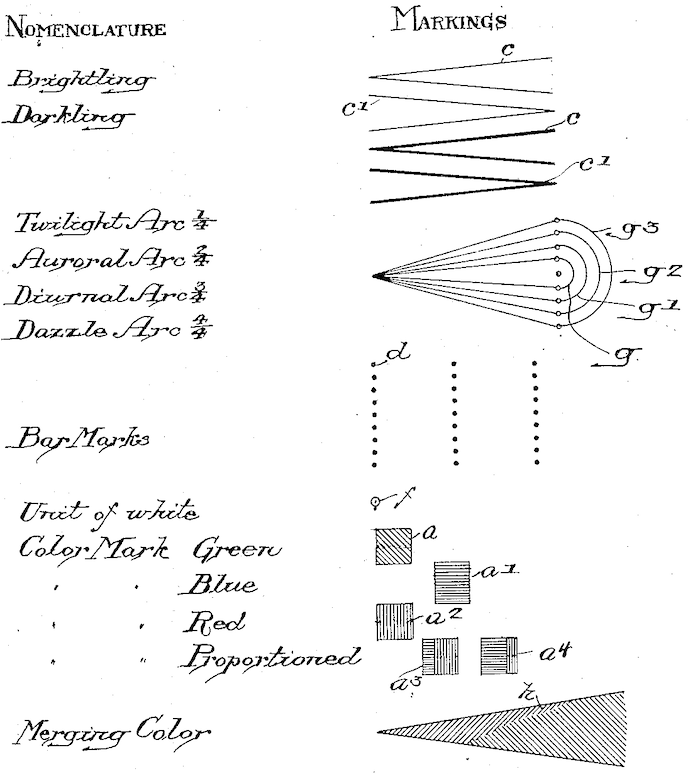
Greenewalt’s ornate rhetoric perhaps obscured her very real technical capability. Her first experiments were with hand-colored photographic films, but soon she would devote her attention to the control and manipulation of electric light. When she first began to pursue her idea of light-music, theatrical lighting was a comparatively blunt instrument. To realize her concept, Greenewalt had to design many of the components herself. Her most famous invention was an improved rheostat, allowing her to dim or brighten electric lights across 267 levels of gradation (no small feat in a pre-transistorized world). There were remote-controlled colored gels and reflectors. There were glass tubes enclosing pools of mercury, carrying current, tilted by servo motors so that contact switches could rotate in and out of the electrified liquid. Reading between the florid lines of her Nourathar book, one notices her stubborn industriousness, chasing down technological improvements to make electric light brighter, more intense, more flexibly controlled.
Greenewalt’s artistic sensibility, however, remained distinctly old-fashioned. The music for her illuminations was, always and ever, the classical and Romantic repertoire she had studied with Leschetizky. (When Greenewalt patented a system of notating lighting cues in coordination with musical performance, she provided, as an illustration, an accompaniment to Beethoven’s “Moonlight” Sonata.) Her goal was an entire auditorium’s worth of electric illumination, shifting between all available colors and all levels of brightness, under the immediate and subtle control of a single interpreter – a singular artistic consciousness mediating between inspiration and instrument. She encased the ever-more complex iterations of her apparatus in finely-wrought consoles, which were always called “Sarabet” – named after Greenewalt’s mother.
The consoles were elaborate and expensive: four 1926 prototypes cost her $1,000 each, some $14,000 today. And for all Greenewalt’s ambitions toward a universal mode of expression – a “sixth art” of light to take its place alongside music, poetry, painting, sculpture and architecture – the equipment was largely an extension of its creator. Her artistic ideals were built into the consoles’ design and components; it would be difficult to revise a Sarabet to artistic ends even somewhat removed from Greenewalt’s concepts. And the consoles were hardly plug-and-play: Public demonstrations of Nourathar were more like site-specific installations than concert performances. The set-up could change drastically from theater to theater, with Greenewalt making numerous adjustments once she was actually in the auditorium space.
Compare, for instance, the light-art machines of Thomas Wilfred, Greenewalt’s main competitor. Wilfred’s Clavilux devices – in their theatrical versions, consoles not unlike Greenewalt’s – were nevertheless self-contained, projecting light onto a screen rather than manipulating lights installed throughout the theater. Later, Wilfred would move away from console performances, opting for purpose-built machines: sculptures, really, each engineered to project its own work of Lumia, as Wilfred called his light art. It was a canny move vis-à-vis posterity: Wilfred’s devices survive in museums and galleries. Nowadays, Greenewalt’s Nourathar exists only in the imagination.
Greenewalt knew which doors were closed to her, and rarely passed up an opportunity to try and shoulder them open.
Greenewalt and Wilfred might have been complementary artists. Greenewalt designed her light around music, Wilfred around silence; Nourathar’s broad washes of color contrasted with Lumia’s overlapping, curling tongues of light. But the attention given to Wilfred’s performances – and the Clavilux’s similarity to the Sarabet – triggered Greenewalt’s litigious instincts, and she, for a time, pursued legal action against Wilfred, though that suit was ultimately abandoned.
Greenewalt was standing up for her sex as well as her art. As a man, Wilfred slipped easily into public perceptions of inventors and innovators, perceptions that Greenewalt had to fight against for her entire career. Greenewalt was a suffragist and an activist. She knew well which doors were closed to her, and rarely passed up an opportunity to try and shoulder them open.
The repeated references to motherhood in her writing were hardly accidental. Even her political writings circle back again and again to the topic of procreation, often in charged terms. Greenewalt was in favor of divorce (because one should never be shackled with a spouse who didn’t want children) and vehemently opposed to birth control. “The chief concern... of this world,” she wrote, “is to safeguard, strengthen every fruitful link in this unending miracle of a chain made up of children and children’s children.”
The world might disdain her gender, but with her gender came her gender’s prerogative. A mother knows her own child. As she expanded further in Nourathar, “I offer a fine art on a platter full fledged. I have brought it to operable conclusion through boundless effort, sorrow a-plenty, years many and, of course being a woman, tears of blood and myrrh. I await confidently the incense.”
Was it Greenewalt’s suffragist vantage that led her to patent court? A chance to earn women a place at the largely-male table of invention? Was it her maternal inclinations that caused her to defend her efforts in an arena of technological parentage and creation? In retrospect, it was a quixotic effort. After the Stanley suit – and after hearing of another infringing light show at Cleveland’s Severance Hall – she filed a similar and similarly fruitless complaint against the Musical Association of Cleveland.
In Greenewalt’s eyes, the system was stacked against her. To build many of the components of her consoles, she had, by necessity, contracted with the very companies she later accused of stealing her ideas. The patent lawyers she relied on to press her claims were, she complained, simultaneously on retainer with the corporations she was battling. (Litigation, it seems, was Greenewalt’s lot; even as she pursued her patent claims, she was also preparing to go to court on behalf of a willow tree on her estate that local officials wished to cut down.)
A later, unlikely claim, though it never went anywhere near a courtroom, puts the drawbacks of Greenewalt’s reliance on the legal mechanisms of patents in sharp relief. This complaint came in a letter to Simon & Schuster, the publishers of a companion book to Walt Disney’s 1940 music-and-animation feature Fantasia. Conductor Leopold Stokowski’s foreword to the book complimented the way the “imagination of Disney has unfolded a new and freely flowing way of painting with color, light, form and motion.” Greenewalt was incensed:
THESE GENTLEMEN TOGETHER WITH YOURSELVES CLAIM A PRIORITY TO WHICH THEY ARE NOT ENTITLED AND YOU WILL OF COURSE MAKE RESTITUTION WITHOUT DELAY.
The basis of Greenewalt’s claim were her own painted films, dating (she claimed) from between 1909 and 1912, from her earliest light-music efforts. Another patent seemed to suggest that such painted film could function as a kind of gradually-shifting lighting gel. But such ideas are a long way from animated films. As film historian and Greenewalt scholar Michael Betancourt has written, Greenewalt’s assertion “that these colored roll films should be regarded as abstract motion pictures is not supported by either possible role her hand-painted films might have had.”
In fact, Greenewalt might have had a stronger claim on Fantasia itself, which frequently filmed Stokowski and members of the Philadelphia Orchestra silhouetted in deep, shifting pools of colored light – strikingly similar to the principles of Nourathar. Greenewalt and Stokowski, fellow Philadelphians, knew each other (and, apparently, had some fractious history: “I HAVE HAD TO RAP MR. STOKOWSKI’S HANDS OUTSTRETCHED TOWARDS THESE MATTERS MORE THAN ONCE”). It is not hard to imagine how Disney, by way of Stokowski, might have ended up appropriating Greenewalt’s conceptions. That claim, however, would have been far outside of patent law, and Greenewalt instead tried to assert a technical priority that was untenable.
But, as Michael Betancourt has noted, separating Greenewalt’s technical innovations from her artistic conception is not easy. In a crucial way, the Sarabet consoles, for instance, were Nourathar, and Nourathar was the Sarabet consoles. They were not neutral machines, but embodiments of Greenewalt’s aesthetic. Her vision realized the machines; the machines realized her vision. But the patent system served commerce, not art. Or, in Greenewalt’s language: “The Courts had become swayed by the expediency they fronted, as well as by the immensity of big business under single control.” Greenewalt asserted her motherhood to a Solomon all too ready to cut the child in half.
Greenewalt v. Stanley Co. of Am. retains its small but crucial position in case law, its precedent – that an aesthetic conception is ineligible for patent protection – still drawing a kind of boundary between artistic and technological realms. It is a curious boundary. One shudders to think what havoc could be wrought by overzealous application of a patent on an artistic style. Still, at the same time, you could not ask for a better symbol of how the survival of art is as much in spite of as because of the machinery of capitalism. Art can still exert power in a society evolved to serve money and industry, but the mechanism is, more often than not, halting and happenstance.
Greenewalt, for her part, claimed victory in the Stanley case. In 1932, she arranged for a friendly journalist to write an editorial in Philadelphia’s Evening Bulletin highlighting Judge Hugh Morris’s characterization of Greenewalt as “a true artist” and a pioneer in light-music, while ignoring the fact that, in practical terms, the decision went against her. It was pure spin – but also pure persistence. Beirut to Philadelphia, 19th century to 20th, conception to realization: Greenewalt kept going, toward expression, toward the light. “A new beauty is still another reason for desire to live,” she wrote. “It is a strengthening of the heart literally.”
Header image © Bettmann / Getty Images
